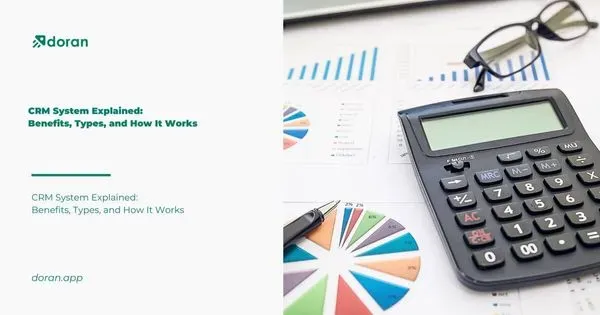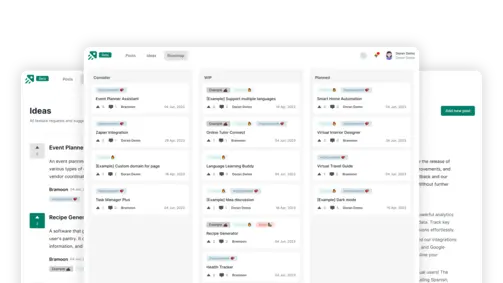How CES Impacts Customer Lifetime Value
Create changelog and product roadmap for your product
Explore nowTable of contents 6 min
In today’s competitive landscape, customer retention reigns supreme. Acquiring new customers is essential, but nurturing existing relationships is the key to long-term success. That’s where Customer Lifetime Value (CLV) comes in. Understanding CLV empowers businesses to prioritize strategies that maximize the value a customer brings over the course of their entire relationship with the brand. This article delves into how CES impacts Customer Lifetime Value, exploring how businesses can leverage CES surveys to drive customer loyalty and ultimately, boost their bottom line.
What is Customer Lifetime Value?

The customer lifetime value represents the cumulative net profit that a loyal customer will generate for your company throughout their relationship with your business. Increasing customer lifetime value (CLV) can have a significant impact on profitability, as it is more cost-effective to retain existing customers than to acquire new ones.
Customer lifetime value is influenced by various factors:
-
Customer average purchase value: The customer average purchase value is a metric that quantifies the average monetary value of each customer’s purchase.
-
Frequency of purchase: The purchase frequency indicates the number of times a purchase is made within a specific timeframe.
-
Customer satisfaction: Customer satisfaction is a crucial factor that significantly influences the extent to which customers exhibit the aforementioned two factors. Higher rates of customer satisfaction are indicative of a stronger manifestation of these factors.
In addition to showcasing net profit, a high customer lifetime value is indicative of a sustainable and positive customer experience (CX). Developing robust customer relationships and continuously enhancing the customer experience can contribute to boosting customer lifetime value.
Ensuring a positive customer experience is crucial for maximising customer lifetime value. One effective way to gauge customer satisfaction is through regular monitoring of happiness levels using customer satisfaction surveys.
Read more: Customer Effort Score (CES): Definition & Ways to Measure
How to Calculate Customer Lifetime Value
The formula for calculating CLV is not too complicated, even for statistics this important. The following information is required to determine customer lifetime value. We suggest defining the time frame covered here as one year.
-
Customer average purchase value: Determine the average price of a purchase by dividing the total amount of money that customers have spent with your company by the total number of purchases made within a specific time period.
-
Purchase frequency: Divide the total number of purchases made during that same time period by the total number of clients who completed a transaction.
-
Customer value: Multiply the frequency of purchases by the average value using the preceding data.
-
Average lifespan: Find out how long a consumer has been a regular buyer of your brand on average.
By multiplying the customer value by the average lifespan, you can calculate the customer lifetime value using these data points. CLV can also be calculated as the product of the average transaction size x the total number of transactions x the length of the retention period. Let’s take an example and figure out the CLV of a client that spends $50 on products from your company twice a year and sticks around for ten years. $50 (average product price) x 2 (annual frequency) x 10 (number of years as a client) = a $1000 CLV.
How CES Impacts Customer Lifetime Value

Customer Effort Score (CES) is a metric that measures the ease or difficulty a customer experiences when interacting with a company to complete a task, such as making a purchase, resolving an issue, or accessing information. High CES scores (indicating low effort) are directly linked to higher customer satisfaction, loyalty, and ultimately, increased CLV. Here’s how CES impacts Customer Lifetime Value:
-
Reduced Churn: Customers who find it easy to interact with a brand are more likely to remain loyal and repurchase.
-
Increased Customer Satisfaction: When customers feel their needs are addressed efficiently, they are more likely to be satisfied with the overall experience.
-
Enhanced Brand Advocacy: Satisfied customers are more likely to recommend a brand to others, boosting referral rates and positive word-of-mouth marketing.
-
Improved Customer Lifetime Value: All these factors – reduced churn, higher satisfaction, and increased advocacy – contribute to a longer customer lifespan and ultimately, a higher CLV.
Find out more: CES in the Age of Automation & AI: Future-Proofing Customer Experience
How to Leverage CES Surveys to Drive CLV

CES surveys are typically short and consist of a single question worded in a way that encourages honest feedback. Here are some ways businesses can leverage CES surveys to drive CLV:
Identify Customer Pain Points
CES surveys can uncover areas where customers struggle to complete tasks or find information. This allows businesses to identify and address friction points in the customer journey, streamlining processes and improving overall customer experience.
Drive Product Improvement
Analyzing CES data alongside customer feedback can reveal areas where products or services fall short of customer expectations. This valuable insight can inform product development and improvement initiatives, leading to offerings that better meet customer needs and enhance satisfaction.
Improve Customer Satisfaction
CES scores provide a direct measure of how easy or difficult customers find it to interact with the brand. By taking action to address areas with low CES scores, businesses can improve customer satisfaction and foster loyalty.
Build Customer Loyalty Programs
Understanding customer effort can inform the development of targeted customer loyalty programs. For example, offering expedited service or dedicated support channels to high-effort customers demonstrates a commitment to their needs and can foster loyalty.
Enhance Customer Support
CES data can be used to evaluate the effectiveness of customer support channels. Analyzing which channels have consistently low CES scores can pinpoint areas where improvement is needed. Businesses can then invest in training support personnel, improving response times, or offering alternative support options to reduce customer effort.
Forecast Future Customer Behavior
CES scores can be used as a predictive indicator of customer churn. Identifying customers consistently experiencing high effort can help businesses proactively address their concerns and mitigate potential churn. Additionally, CES scores can aid in segmenting customer groups based on their needs and tailoring marketing or communication strategies accordingly.
As we conclude our exploration into how CES impacts Customer Lifetime Value (CLV), it becomes evident that minimizing customer effort is essential for fostering long-term relationships and driving profitability. By prioritizing ease of use and convenience in every interaction, businesses can enhance customer satisfaction, increase loyalty, and ultimately, maximize the lifetime value of their customer base. Embrace CES as a strategic tool for optimizing customer experience, and watch as your business flourishes with loyal, high-value customers.
What to not miss out on our blog
Gain insightful knowledge and invaluable experiences from dedicated experts.

CRM System Explained: Benefits, Types, and How It Works
Discover everything about CRM system. Learn the benefits and how a CRM system works to improve customer relationships and streamline business operations.

Are you ready? Start your free trial today.
Enhance communication, keep track of the progress, understand customers' insight and more by taking your first trial on Doran.
Sign up for free

